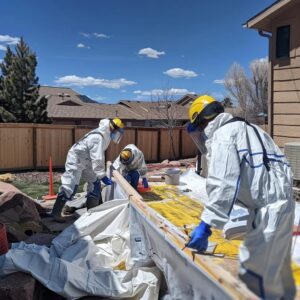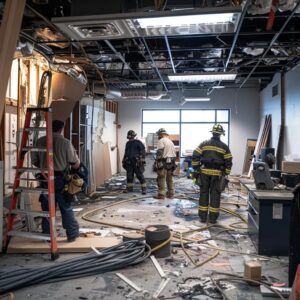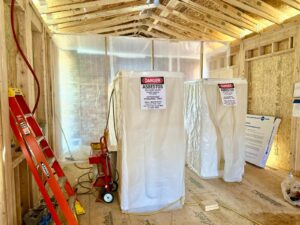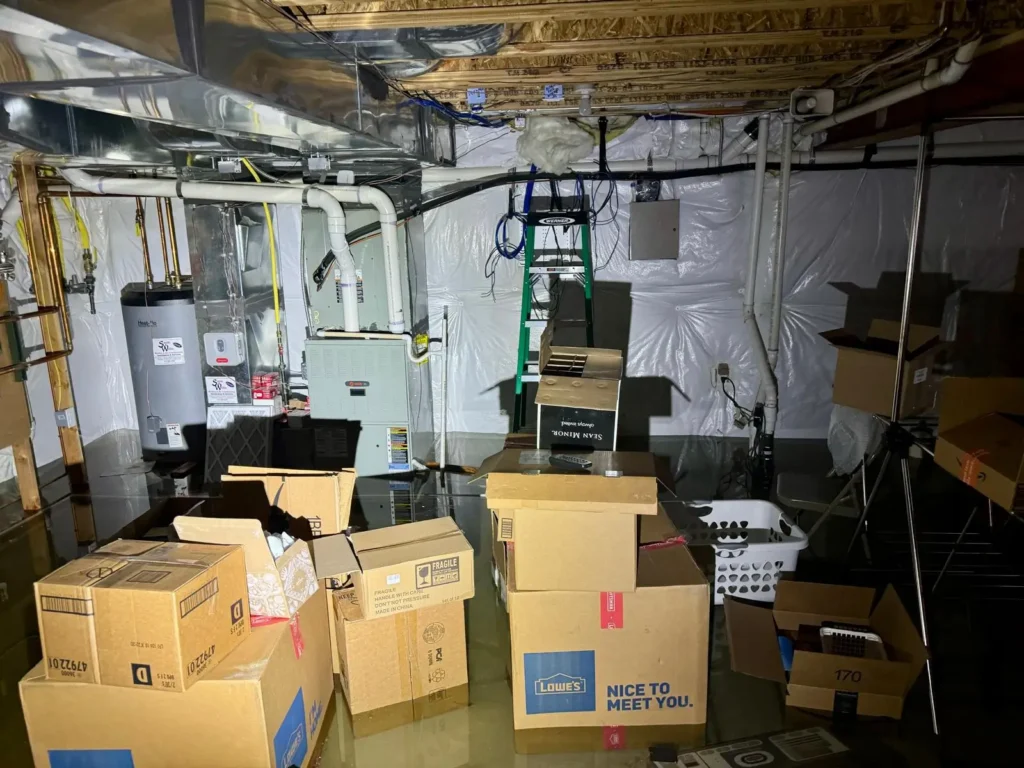
Colorado faces one of the highest flood risks in the United States, with flooding being the most common and widespread natural hazard affecting the state. Understanding what causes flooding in Colorado is crucial for homeowners, especially in high-risk areas like Denver, Colorado Springs, and Boulder. This comprehensive guide explores the primary flood causes, identifies the most vulnerable cities, and explains why professional water damage restoration services are essential.
Colorado Flood Statistics: Why Denver Water Damage Restoration is Critical
Flood-prone areas have been identified in 267 Colorado cities and towns and in all 64 counties, making virtually no part of Colorado immune to flood risk. The 2020 First National Flood Risk Assessment (FNFRA) estimated that 131,300 properties are at substantial risk of flooding in Colorado – a staggering number that far exceeds FEMA’s conservative estimate of 43,300 properties.
Between 20 to 30 large-magnitude floods occur somewhere in the state every year, and major flood disasters(warranting a federal disaster declaration) have occurred on average every five years since 1959. These statistics underscore the persistent and evolving nature of flood risks across Colorado.
If your Denver property has experienced flooding, don’t wait – Contact Elyon Restoration immediately for emergency water damage restoration services available 24/7.
Colorado Cities Most At Risk for Flooding: Where Emergency Water Restoration is Most Needed
1. Colorado Springs Flood Risk – Highest Water Damage Exposure in the State
Colorado Springs has the unfortunate distinction of ranking first in the state for the number of properties at risk of flooding. If we extend our review into all of El Paso County, the number of properties at risk rises to 16,328 – a staggering 424% higher than FEMA estimates.
2. Denver Metro Flooding Vulnerability – Major Urban Water Damage Risk
The city of Denver is not far behind with 10,136 properties at risk. If we extend our review to all 10 counties in the Denver metropolitan area, the number of properties at risk jumps to 36,308. This massive exposure makes Denver water damage restoration services critical for homeowners and businesses.
3. Other High-Risk Colorado Cities for Flood Damage
Historical flood data shows these cities frequently experience significant flooding:
- Boulder – Site of the devastating 2013 Front Range floods
- Fort Collins – Experienced severe flash flooding in 1997
- Pueblo – Historic Arkansas River flooding events
- Greeley – South Platte River flooding concerns
What Causes Flooding in Colorado: Primary Flood Types Requiring Water Damage Restoration
1. Flash Flooding Colorado: The State’s Deadliest Water Damage Threat
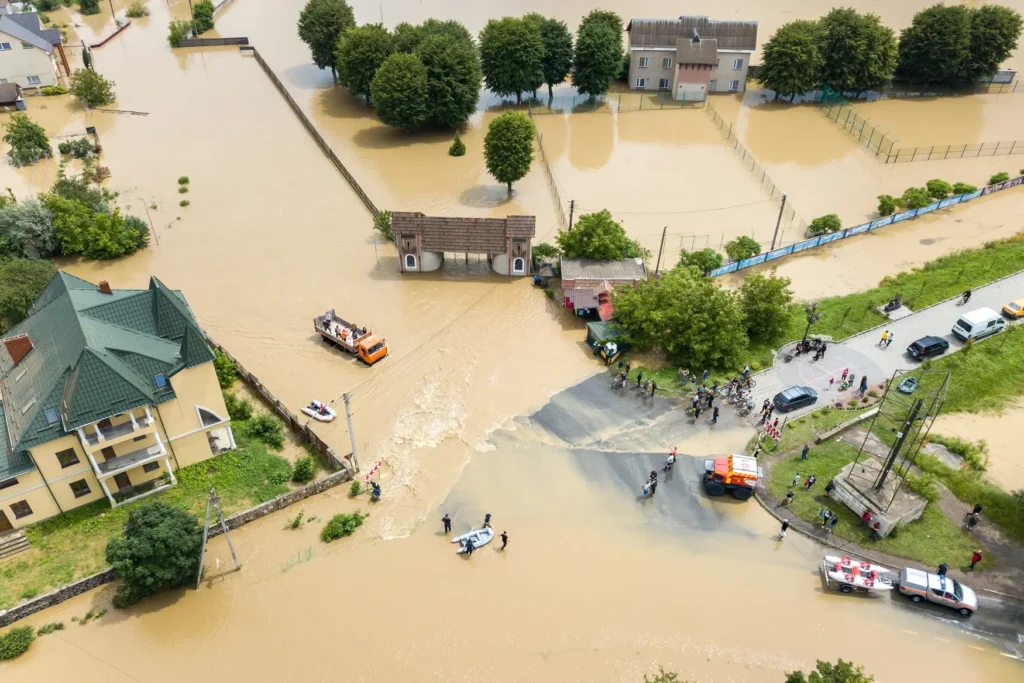
Flash floods are Colorado’s most dangerous flood type, developing rapidly within six hours of their triggering event. The most flash-flood prone regions of Colorado are found along the base of the lower foothills east of the mountains.
Key characteristics:
- Sudden onset with minimal warning
- Intense, localized rainfall (cloudbursts)
- Particularly dangerous in mountain canyons
- Can transform dry creek beds into raging torrents in minutes
The devastating Big Thompson Canyon flood of 1976 killed 143 people and remains Colorado’s deadliest natural disaster, demonstrating the lethal potential of flash floods.
2. Snowmelt Flooding Colorado: Seasonal Mountain Water Damage Risk
Colorado’s mountainous terrain makes snowmelt flooding a significant seasonal threat, typically occurring from May through July. Rapidly warming temperatures can accelerate snowpack melting, causing rivers and streams to overflow their banks.
Climate change is intensifying this risk by altering traditional snowmelt patterns, leading to earlier and more rapid snow melting events.
3. Post-Wildfire Flooding: A Growing Colorado Flood Threat
Area wildfires may increase your flood risk. Burned soil can be as water repellent as pavement. Rainfall that would normally be absorbed by soil may run off extremely quickly after a wildfire.
Why post-fire flooding is so dangerous:
- Burned soil becomes hydrophobic (water-repellent)
- Even light rainfall can trigger devastating debris flows
- Risk persists for 5-10 years after wildfire
- Contains dangerous debris, ash, and sediment
4. Urban Flooding Denver: Development Increases Water Damage Risk
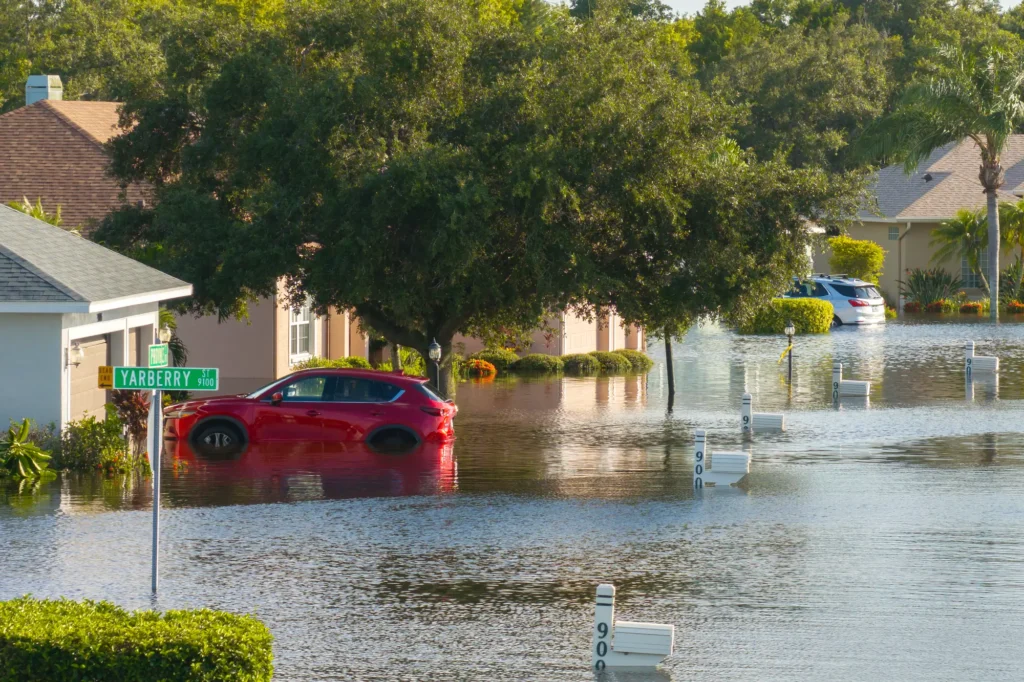
Urbanization fundamentally alters natural water flow patterns. Impervious surfaces like roads, parking lots, and rooftops prevent water absorption, dramatically increasing surface runoff volume and velocity.
5. River Flooding Colorado: Creek and River Overflow Damage
Major river systems including the South Platte, Arkansas, and Colorado Rivers can overflow during heavy precipitation events or rapid snowmelt, causing widespread inundation of adjacent areas.
Experiencing flood damage right now? Elyon Restoration provides immediate emergency response in Denver and surrounding areas. Call now for 24/7 water extraction services.
Colorado Flood History: Major Water Damage Events and RestorationLessons
The 2013 Front Range Floods: Modern Water Damage Catastrophe
Historic rains and flooding affected 6 major rivers and tributaries, 14 counties, and over a dozen cities and towns in Colorado. Boulder recorded a storm total of 17.15 inches. This event caused:
- 8 fatalities and over 3,000 rescues
- 1,500 homes destroyed, 19,000 damaged
- $1-2 billion in total damages
- Massive infrastructure destruction
The Fort Collins Flood of 1997: Urban Flash Flooding Disaster
The storm dropped 8 to 10 inches of rain in 5 hours on ground already saturated from previous rains, demonstrating how antecedent conditions amplify flood risk.
The 1921 Arkansas River Flood: Historic Colorado Water Damage
One of Colorado’s earliest documented major flood disasters, this event highlighted the long-standing flood vulnerabilityacross the state.
Why Professional Water Damage Restoration Denver is Essential

When Colorado homeowners face flooding, understanding what is water damage restoration becomes crucial for making informed decisions about property recovery. Professional restoration goes far beyond simple water removal—it’s a comprehensive process that addresses immediate dangers and prevents long-term damage.
Immediate Health and Safety Risks from Flood Water
Floodwater contains dangerous contaminants including:
- Raw sewage and bacteria
- Chemical pollutants
- Debris and sharp objects
- Potential electrical hazards
Hidden Water Damage Detection
Professional water damage restoration experts use specialized equipment to detect:
- Moisture trapped in walls and subflooring
- Potential mold growth areas
- Structural damage invisible to the naked eye
- Contamination levels requiring specific treatment
Mold Prevention After Flooding
Mold can start growing within 24-48 hours if water damage is not properly treated. Professional restoration prevents this health hazard through:
- Rapid water extraction
- Industrial-grade dehumidification
- Antimicrobial treatments
- Proper structural drying
Understanding how long does the water damage restoration process typically take helps homeowners plan appropriately and set realistic expectations. The timeline varies based on damage severity, but acting quickly is always essential.
Don’t risk your family’s health – Contact Elyon Restoration for comprehensive water damage assessment and restoration services.
Water Damage Repair Costs Denver: The True Financial Impact
Just one inch of water in a single floor in a small home can cost more than $11,000 in repairs. The average cost of water and flood damage repair in Denver, Colorado, typically ranges from $2,500 to $7,500.
However, delayed restoration dramatically increases costs due to:
- Secondary water damage
- Mold remediation requirements
- Structural repairs
- Personal property replacement
Climate Change Impact on Colorado Flooding: Intensifying Water DamageRisks
Colorado is experiencing increasingly severe weather patterns that amplify flood risks:
- More intense precipitation events
- Earlier snowmelt seasons
- Increased wildfire frequency creating more burn scars
- Extended drought periods followed by extreme rainfall
2023 was the worst year on record for the number of billion-dollar disasters in one calendar year, with 28 weather and climate disasters, including flooding.
Flood Insurance Colorado: Critical Financial Protection Against Water Damage
Homeowner’s insurance doesn’t typically cover flood damage. It usually covers damage caused by internal sources such as burst pipes. It does not cover damage caused by external sources like rain, storms, or flooding.
Key flood insurance facts:
- Available through the National Flood Insurance Program (NFIP)
- 30-day waiting period before coverage begins
- Essential for properties in and outside high-risk zones
- Over 20,000 flood insurance policies currently in effect in Colorado
Emergency Flood Response: Immediate Action Steps for Water Damage
When disaster strikes, knowing the essential first action in water damage restoration process can mean the difference between manageable repairs and catastrophic property loss. Time is your most valuable asset in flood recovery.
If your property experiences flooding:
- Ensure safety first – evacuate if necessary
- Document damage with photos for insurance
- Contact professional restoration immediately
- Begin water extraction within 24-48 hours
- Remove standing water and moisture quickly
Emergency flooding at your Denver property? Elyon Restoration responds in under 90 minutes with professional water extraction and restoration services. Call our emergency hotline now.
Conclusion: Protecting Your Colorado Property from Water Damage
Understanding what causes flooding in Colorado empowers homeowners to make informed decisions about property protection, insurance coverage, and emergency preparedness. With 23.7 million U.S. properties at risk of floodingand Colorado’s demonstrated vulnerability, professional water damage restoration services aren’t just helpful—they’re essential.
Whether you’re dealing with flash flood damage, snowmelt flooding, or post-wildfire debris flows, acting quickly minimizes damage and protects your investment. Don’t let water damage escalate into a major disaster.
For immediate professional water damage restoration in Denver and throughout Colorado, trust Elyon Restoration’s certified experts. Contact us 24/7 for emergency response, water extraction, and complete flood damage restoration services.
Elyon Restoration serves Denver, Colorado Springs, Boulder, Fort Collins, and surrounding Colorado communities with professional water damage restoration, flood cleanup, and emergency restoration services. IICRC certified, fully licensed and insured.

